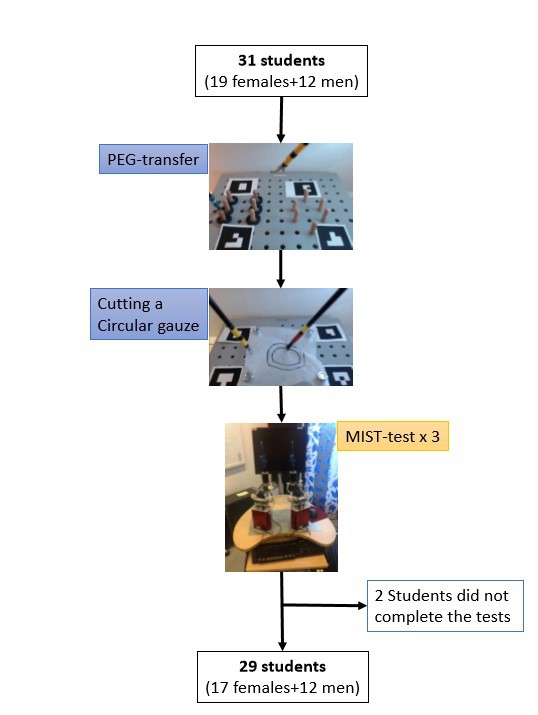
|
 |
Back to 2017 Posters
VIDEO ANALYSIS IN BASIC SKILLS TRAINING: A WAY TO EXPAND THE VALUE AND USE OF BLACKBOX TRAINING?
Lars Enochsson*1,2, Ninos Oussi1,3, Constantinos Loukas4, Ann Kjellin1, Vasileios Lahanas4, Konstantinos Georgiou4, Lars Henningsohn1,5, Evangelos Georgiou4
1Department of Clinical Science, Intervention and Technology, Karolinska Institutet, Center for Advanced Medical Simulation and Training, Stockholm, Sweden; 2Department of Surgical and Perioperative Sciences, Division of Surgery, Umeå University, Umeå, Sweden; 3Center for Clinical Research Sörmland, Uppsala University, Uppsala, Sweden; 4Medical Physics Lab-Simulation Center, School of Medicine, University of Athens, Athens, Greece; 5Department of Clinical Science, Intervention and Technology, Karolinska Institutet, Division of Urology, Stockholm, Sweden
Background
Basic skills training in laparoscopic high fidelity simulators (LHFS) to proficiency levels has been shown to improve laparoscopic skills. However, since LHFS are expensive, availability for training is limited which could have a negative impact on the availability of simulated laparoscopic training. The aim of this study was to assess whether automated video analysis of BlackBox laparoscopic training could, in part, provide an alternative to high-fidelity skills training in simulators.
Material and methods
Medical students (19 females and 12 men) volunteered to join the study during their surgical semester at Karolinska University Hospital. After giving informed consent they all performed two laparoscopic tasks (PEG-transfer and cutting a circular gauze) in a BlackBox (built by and given to us by courtesy of MPLSC, Athens University, Greece). All the tasks were videotaped and sent to MPLSC for automated video analysis. The students also performed final tests in the validated Minimally Invasive Surgical Trainer (Mentice, Gothenburg, Sweden). The outcome of the automated video analysis was compared with the MIST simulator test results. The study is a European collaboration between two simulation centers in Sweden and Greece within the framework of ACS-AEI.
Results
Thirty-one medical students (19 females and 12 men) with a mean age of 26.2±0.8 years paticipated in the study. All the test subjects performed the two laparoscopic tasks but two of them did only one of the three MIST tasks and were thus excluded. The outcome of all the three MIST scores showed significant positive correlations to both the Pl variable in the automated video analysis of the PEG transfer (RSquare 0.48, P<0.0001; 0.34, P=0.0009; 0.45, P<0.0001, respectively) as well as to the Prtcl variable in that same exercise (RSquare 0.42, P=0.0002; 0.29, P=0.0024; 0.45, P<0.0001). Positive correlations were also found, although not as pronounced, between the MIST performance and the automated video analysis of the gauze cutting exercises. The correlations between the automated video analysis and the MIST-tests were exclusively in the group with less PC gaming experience as well as in the female group.
Conclusions
Automated video analysis provides accurate results in line with those of the validated MIST-simulator. We believe that a more frequent use of automated video analysis could provide an extended value to cost-efficient laparoscopic BlackBox training. However, since the subgroup analysis showed gender specific as well as PC gaming experience differences regarding the correlations between the two tests this has to be taken into account regarding the value of automated video analysis.

Flowsheet of the study
Back to 2017 Posters
|


